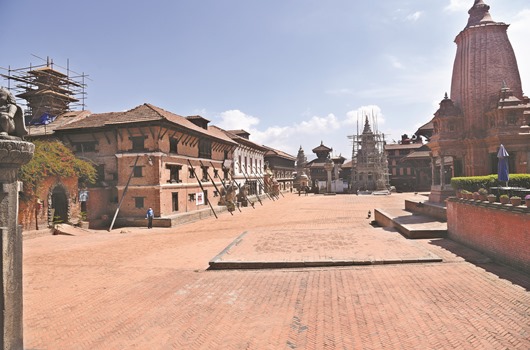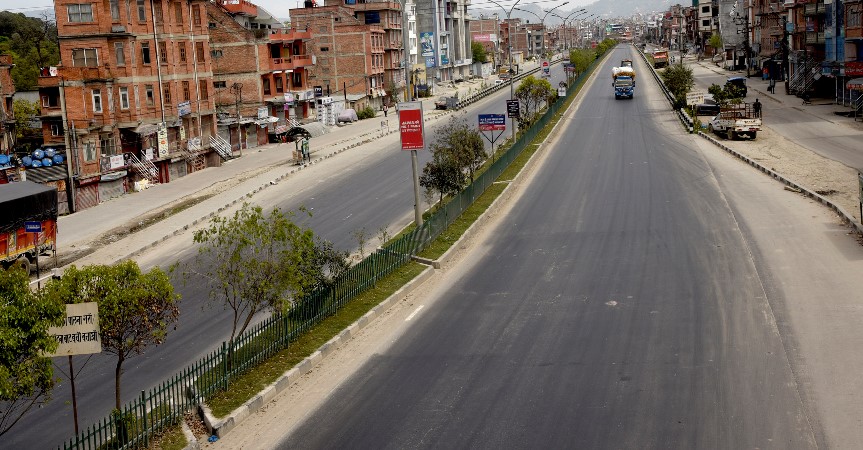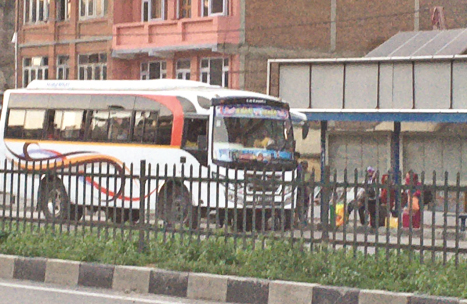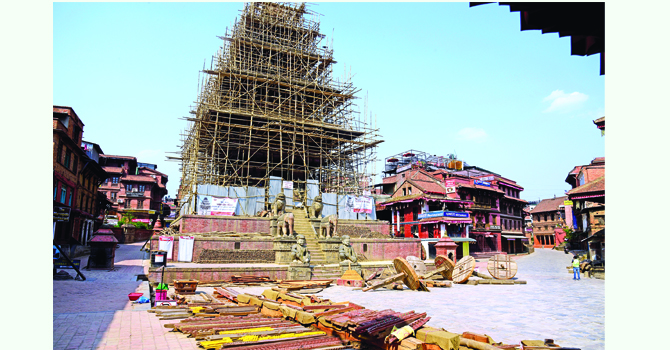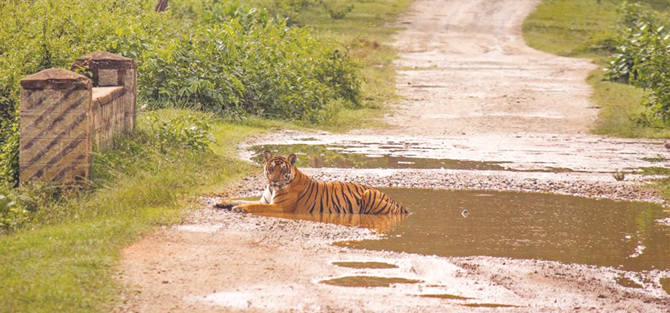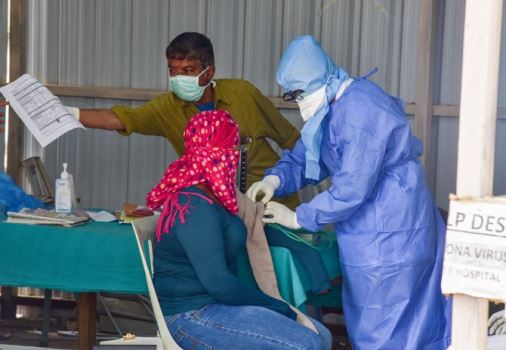Nepal to earn 45m US dollar from carbon trade
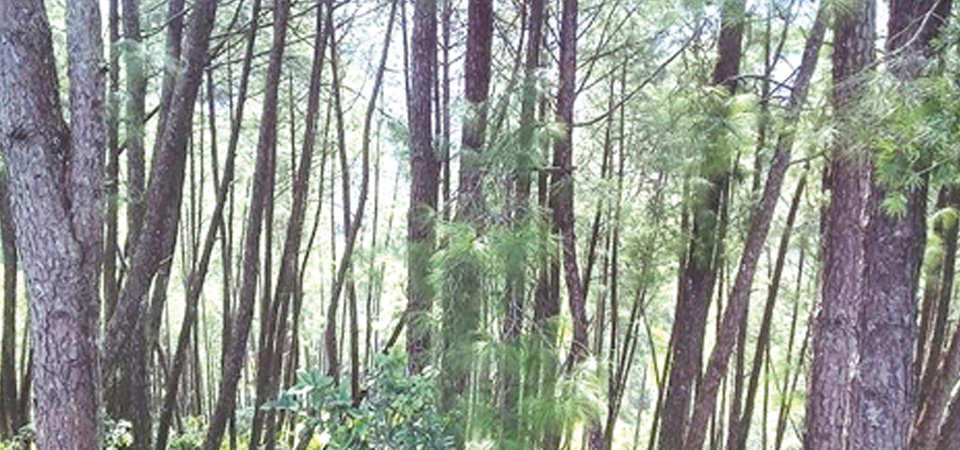
Kathmandu, Apr. 11: At a time when the world leaders are discussing the reduction of deforestation, Nepal is going to earn 45 million US dollars by selling nine million tonnes of carbon equivalent (CO2e) by 2024 from its forests.
As per the Carbon Trade Agreement signed between the government of Nepal and the World Bank on February 24, 2021, for six years, the Emission Reduction Plan Document (ERPD) has been implemented in 13 districts of Terai Arc Landscape (TAL). With ERPD in place, the country is expected to reduce 9 million tonnes of carbon dioxide emissions in the Terai Arc Landscape.
Nepal is selling carbon to the developed countries under the Reducing Emissions through Deforestation and Degradation plus (commonly called REDD+) programme under the Ministry of Forest and Environment.
The Emission Reduction Programme in the Terai aims to lower the rates of deforestation and forest degradation across 2.4 million hectares of land rich in natural resources, including 20 per cent of the country’s forest cover, said Yajnamurti Khanal, Information Officer and Under Secretary at REDD+ Implementation Centre of the Ministry of Forest and Environment.
Accordingly, the World Bank will buy stored carbon between 2018 and 2024, said Khanal. "This is a performance-based Emissions Reduction (ER) Programme. If we can sell the carbon, then only we get money,” Khanal said.
The ERPD was prepared in 2018 for 10 years through REDD+ but later the contract was signed with the World Bank for six years to be implemented in those 13 Terai districts, Khanal said.
According to Khanal, the Terai region supports some of the most productive forests, richest biodiversity and most significantly protected areas in Nepal. The region also has the highest population growth, urbanisation, and economic development in the country, especially in agriculture. As a result, natural resources in the Terai face significant threats which the emission reduction programme helps to address.
This initiative also helps in improving community-based forest management, transfers user rights for national forests to local communities, improves integrated land use planning, promotes alternative sources of energy and strengthens capacity for protected area management.
The REDD+ implementation programmes are mainly to prevent deforestation and degradation. These include increasing carbon reserves by conserving forests, sustainable forest management, and reducing emissions through deforestation.
There are other benefits of the programme such as conserving and increasing water sources, and promoting efficient water management technologies.
"We have made an agreement to receive money in two instalments with the World Bank–one in 2022 and another in 2024. Now, we are preparing for the carbon measurement to receive the first instalment. Experts have been deployed in the field to measure the carbon and the report will be prepared as per the results from the field. After submitting the report we will receive a certificate. We will sell the carbon absorption certificate to receive the money that is called carbon trade," he informed.
Before providing the certificate, they will again verify the report, whether it is correct or not. "We will measure dry biomass of wood as per the weight of the tree in the field. There is a saying that every tree has 47 per cent of carbon and the expert will measure every tree dividing the plot," Khanal said.
Nepal has not received any money from carbon trade so far but the World Bank provided $10 million dollars for the capacity development in 2009.
For another initiative on carbon trade, a letter of intent has been signed between the Nepal government and the Lowering Emissions by Accelerating Forest finance (LEAF) Coalition in COP 26 in Glasgow recently.
"As per the agreement, the government will sell 30 million tonnes of CO2e for US dollars 10 per tonne from carbon trade between 2022 to 2026. The programme will be implemented in Bagmati, Gandaki and Lumbini Provinces," Khanal said. The initial agreement was made to receive US dollars 10 per tonne.
Nepal has a total of 44.74 per cent of forest and other wooded lands. Now the forest areas have been increasing mainly due to migration, displacement, and other various reasons. However, a small amount of forest has decreased during development works in the Terai such as the construction of railways, postal roads, canals and airports, Khanal said.
According to Second Nationally Determined Contributions (NDC), the government aims to maintain 45 per cent of the total area of the country under forest cover (including other wooded land limited to less than 4 per cent) by 2030. Also aims to manage 50 per cent of Terai and Inner Terai forests and 25 per cent of middle hills and mountain forests sustainably, including using funding from REDD+ initiatives by 2030.
Nepal’s annual per capita carbon emission is one of the lowest in the world at 0.29 tonnes.
Recent News

Do not make expressions casting dout on election: EC
14 Apr, 2022
CM Bhatta says may New Year 2079 BS inspire positive thinking
14 Apr, 2022
Three new cases, 44 recoveries in 24 hours
14 Apr, 2022
689 climbers of 84 teams so far acquire permits for climbing various peaks this spring season
14 Apr, 2022
How the rising cost of living crisis is impacting Nepal
14 Apr, 2022
US military confirms an interstellar meteor collided with Earth
14 Apr, 2022
Valneva Covid vaccine approved for use in UK
14 Apr, 2022
Chair Prachanda highlights need of unity among Maoist, Communist forces
14 Apr, 2022
Ranbir Kapoor and Alia Bhatt: Bollywood toasts star couple on wedding
14 Apr, 2022
President Bhandari confers decorations (Photo Feature)
14 Apr, 2022




